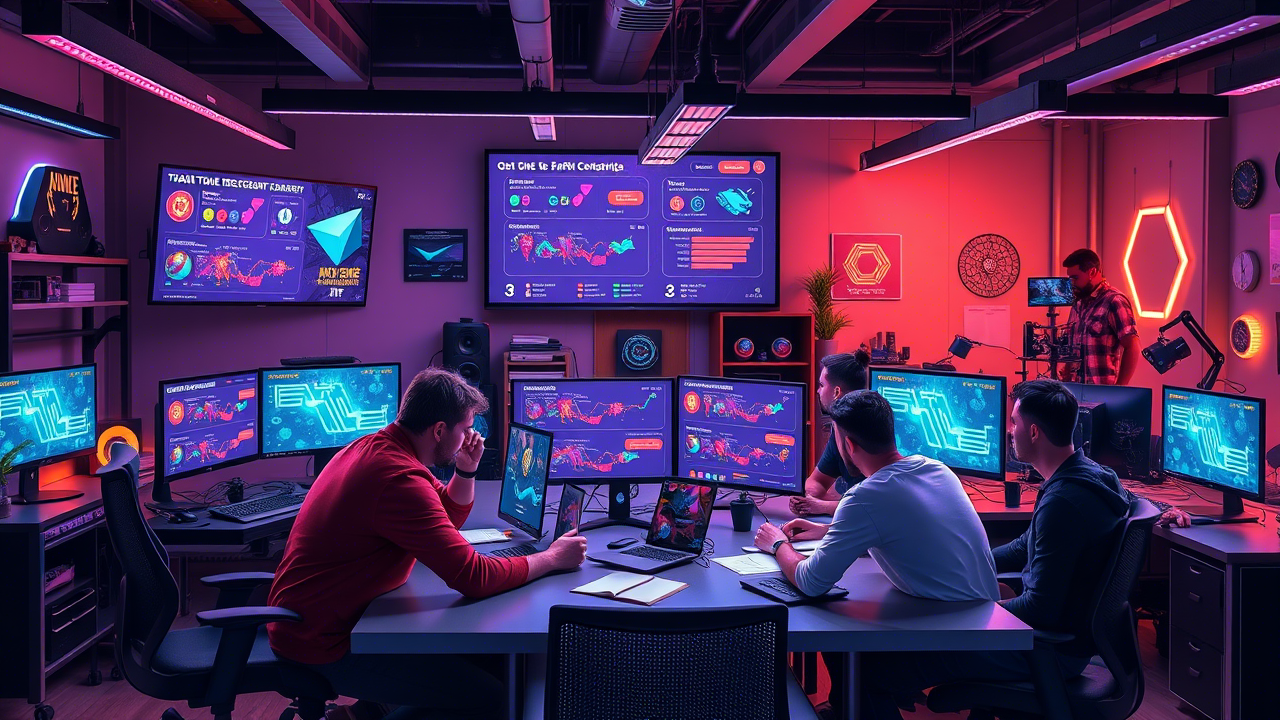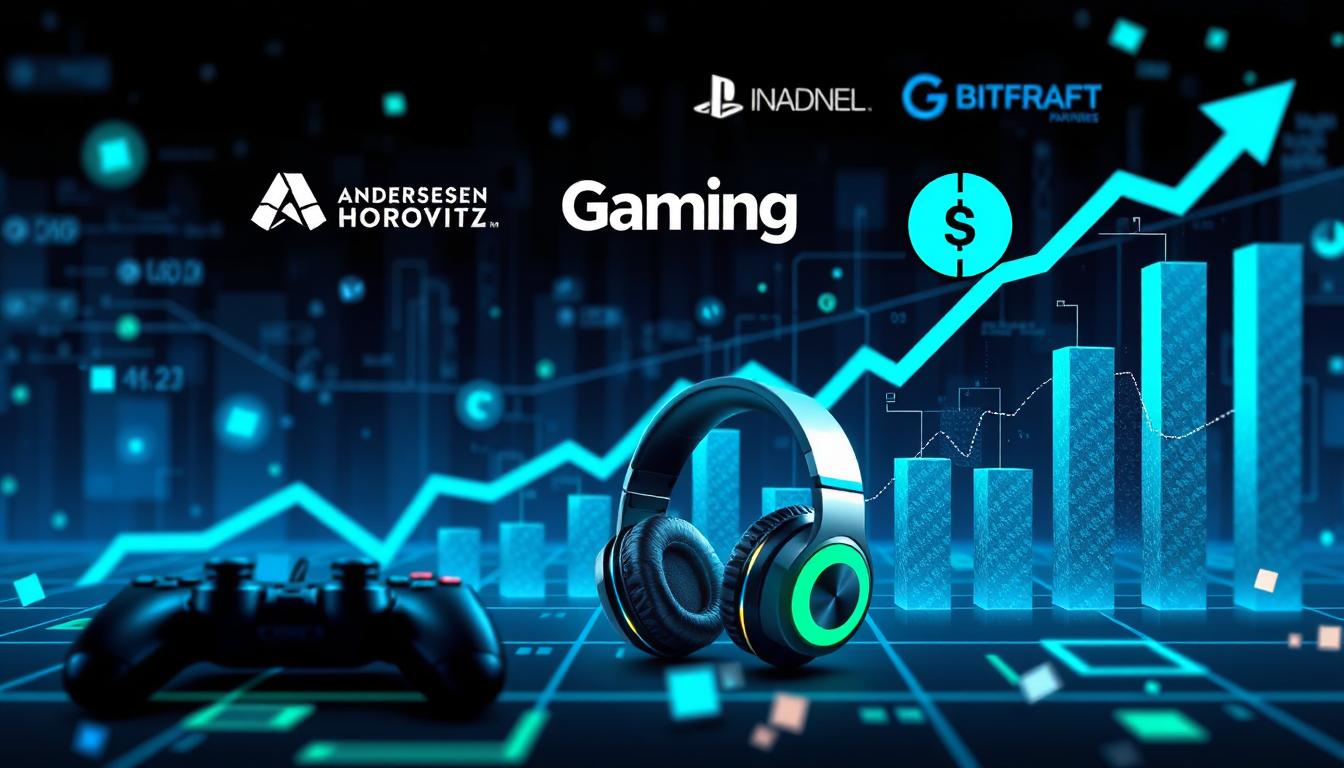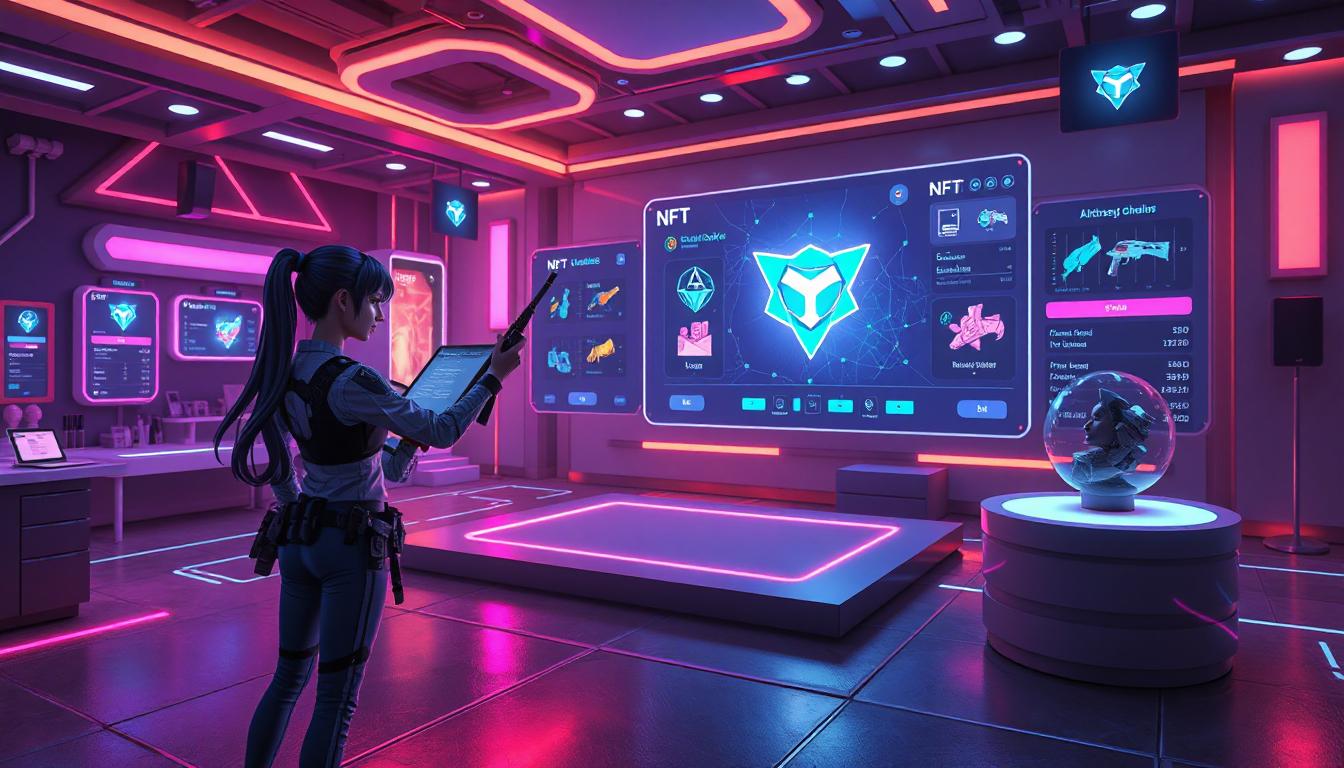
The Transformative Impact of Cryptocurrency in Gaming: How Blockchain and Crypto Tokens Are Reshaping In-Game Economies
The revolutionary transformation of the gaming industry is taking place through the integration of cryptocurrency in gaming and blockchain gaming technologies. This is changing the fundamentals of in-game economies and the way players and developers interact with digital assets. See How to Run a Successful Video Game Startup for information on how startups can take advantage of these advancements. This article examines the ways in which play-to-earn games, digital assets in gaming, crypto tokens in gaming, and NFTs in video games are enabling players to make real money while having fun and separating the gaming economy from the gaming platform.
We’ll take a close look at this development, discussing the market trends, the new virtual currency scene, and the equity and investment opportunities presented by the move to decentralized game economies. Using reliable case studies from late 2023 and early 2024, competent facts, and respectable statistics, we shall describe this shift.
Blockchain Gaming and Play-to-Earn Models: The New Frontier in Gaming Industry Trends
Blockchain technology is transforming gaming. It enables true digital ownership. Players now fully own in-game assets – they’re not just renting from developers.
Key 2025 Trends (per CoinMarketCap):
- Blockchain creates sustainable game economies
- NFTs enable verifiable ownership
- P2E models benefit all participants
Traditional vs Blockchain Games:
Traditional:
- In-game money has no external value
- Items only work within the game
Blockchain:
- Uses crypto tokens and NFTs
- Enables secure asset trading
- Runs on decentralized ledgers
Player Benefits:
• Actual asset ownership
• Secure transactions
• Real earning potential
A prime example is Axie Infinity, which has demonstrated the power of decentralized economies by allowing players to earn tokens through gameplay and trade them for real-world currency. This model has led to over 2.5 million daily active users as of 2023, illustrating how player-driven economies can boost engagement and retention. Similarly, The Sandbox and Decentraland leverage their native tokens (SAND and MANA) to enable players to buy virtual land, create content, and monetize their experiences within a decentralized governance framework. These platforms illustrate how blockchain gaming fosters creativity and financial opportunity, attracting partnerships with major brands and celebrities.
The P2E model’s economic impact is particularly significant in regions with limited job opportunities, where players earn a stable income by participating in games. However, challenges such as high entry costs (e.g., purchasing Axies) and cryptocurrency market volatility remain.The gaming NFT market reached $4.8 billion in 2024. Experts predict 24.8% annual growth through 2034.
Key Growth Drivers:
- Rising blockchain adoption
- Metaverse expansion
- Increasing P2E popularity
Blockchain technology represents more than a temporary trend—it’s fundamentally altering game design and monetization at its core. The integration of crypto tokens has introduced irreversible changes to the gaming landscape by transforming player ownership structures and revenue models.
This evolution manifests through three critical developments: First, the concept of permanent digital ownership now allows players authentic control over their in-game assets. Second, monetization strategies have progressed beyond traditional models, creating reciprocal earning opportunities for both studios and users. Third, innovative game mechanics have emerged that support cross-platform asset utility and player-driven virtual economies with tangible real-world value.
The cumulative impact of these changes suggests the gaming industry has reached an inflection point, with blockchain establishing new paradigms that will shape future development. The transition from centralized to decentralized gaming ecosystems appears inevitable as these technologies mature and gain wider acceptance. Developers who embrace these technologies can create more engaging, player-centric experiences while opening new revenue streams. For startups in the gaming industry, integrating cryptocurrency can serve as a competitive advantage, attracting users and investors alike.
Case Studies Highlighting Cryptocurrency’s Role in Gaming Growth and Player Engagement
Despite a minor market contraction compared to 2023, the blockchain gaming industry saw 68 investment deals in Q1 2024, highlighting increased investor confidence. Both the social RPG Pixels and Sky Mavis’ Ronin blockchain were notable performers; after switching to Ronin, Pixels reached 1.2 million daily active unique wallets. As an example of how blockchain infrastructure advancements can spur ecosystem growth, this transfer increased user activity and token prices across linked projects like Apeiron and CyberKongz.
Big Time, a blockchain game, demonstrates the profitable potential of crypto-enabled gaming experiences, disclosing $100 million in sales since its pre-season launch in October 2023. These achievements are indicative of a larger trend in the industry: games that successfully blend sizable player bases, transparent business methods, and ongoing feature development typically see success. Long-term success also depends on the capacity to engage communities and adjust to the mood of the cryptocurrency market.
The Sandbox exemplifies decentralized economies by letting users exchange virtual land and assets with the SAND token. Smart contracts control this token to ensure security and transparency.
Additionally, by increasing the accessibility and rewards of digital assets, gaming culture is hastening the adoption of cryptocurrencies. Token economies and integrated cryptocurrency wallets in games make it easier to manage profits and trade assets, bridging the gap between finance and gaming. In addition to improving gaming, this connection informs users about cryptocurrencies, which could increase the number of cryptocurrency users.

The Role of Cryptocurrency in the Metaverse and Future Gaming Ecosystems
Blockchain technology supports these virtual economies, guaranteeing transparency, security, and immutability of transactions; its integration allows users to monetize virtual experiences, trade digital assets, and engage in decentralized finance (DeFi) activities, causing a paradigm shift in digital economies. As the metaverse concept gains traction, cryptocurrencies are emerging as the native currencies within these virtual worlds, facilitating smooth transactions, ownership verification, and asset interoperability.
By enabling token-based voting that gives users a say in platform development, the metaverse and cryptocurrency are combining to promote innovation in decentralized governance. The trend toward player-driven economies, in which gamers are active stakeholders rather than only customers, is consistent with this democratization.
Adopting blockchain technology and cryptocurrencies is increasingly crucial for game makers to remain relevant and competitive. These technologies provide the means to create transparent, safe, and entertaining gaming environments that draw and keep gamers. By utilizing digital economies, they also give companies the chance to innovate, draw in capital, and grow quickly.
Conclusion: Cryptocurrency’s Enduring Impact on In-Game Economies and the Gaming Industry
More than just a new technology, cryptocurrency is changing in-game economies by facilitating play-to-earn models, decentralized marketplaces, and genuine digital ownership that benefits both developers and players. The emergence of decentralized gaming economies, NFTs in video games, and cryptocurrency tokens in games is promoting player-driven economies, creating new trends in the gaming industry, and blending in smoothly with the growing metaverse.
The concrete advantages of blockchain gaming are illustrated by case studies such as Axie Infinity, Pixels, The Sandbox, and Decentraland, which range from higher player engagement and retention to notable revenue generation. This shift is speeding up, as seen by the worldwide gaming NFT market’s explosive expansion and the growing use of cryptocurrency wallets in games.
By drawing customers, investors and generating creative revenue streams, integrating cryptocurrency gives developers and entrepreneurs a competitive edge. Gamers acquire previously unheard-of authority over their digital assets as well as fresh chances to make money off of their abilities and inventiveness.
Blockchain technology and cryptocurrency integration will continue to be a major force behind innovation, economic expansion, and community empowerment in the digital era as the gaming industry changes.
Q & A
Q1: How does cryptocurrency integration benefit players in in-game economies?
A1: Through play-to-earn methods, it offers chances to generate real-world revenue, facilitates trade on decentralized marketplaces, and grants true ownership of digital assets.
Q2: What challenges do developers face when integrating cryptocurrencies into games?
A2: Notable obstacles include high player entrance prices, volatile cryptocurrency markets, and environmental issues with blockchain energy use.
Q3: How can startups leverage cryptocurrency to succeed in the gaming industry?
A3: Startups can draw in consumers and investors, develop creative revenue sources, and stand out in a crowded industry by utilizing blockchain technology and cryptocurrency tokens.
Source:
CoinMarketCap’s 2025 blockchain gaming forecast, GAM3S.GG’s Q1 2024 blockchain game report, GM Insights’ gaming NFT market analysis, play to earn business model explained how crypto is changing the gaming world, Top 7 Blockchain Gaming Examples, How Gaming Culture is Unlocking Cryptocurrency Adoption, the impact of blockchain on player retention and engagement, Meta-Crypto: Exploring the Intersection of Cryptocurrency and the Metaverse, Benefits of Using Cryptocurrencies in Gaming


